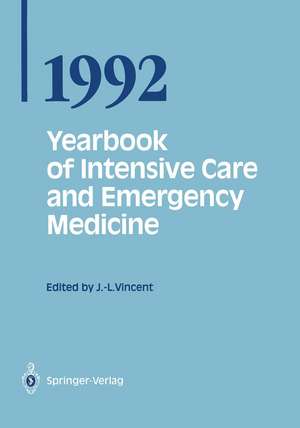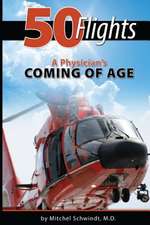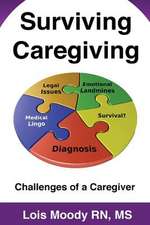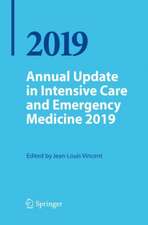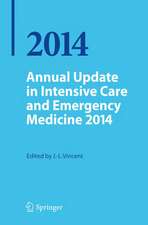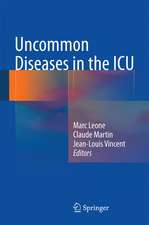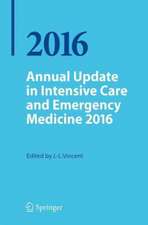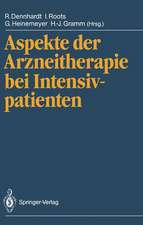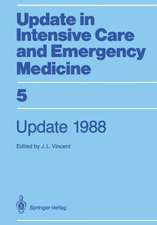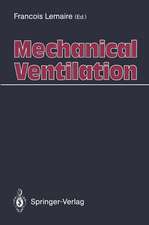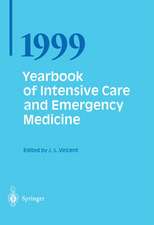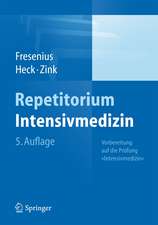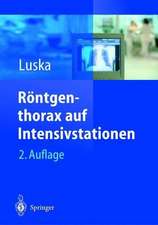Yearbook of Intensive Care and Emergency Medicine 1992: Yearbook of Intensive Care and Emergency Medicine, cartea 1992
Autor Jean Louis Vincenten Limba Engleză Paperback – 13 mar 1992
Preț: 744.82 lei
Preț vechi: 784.01 lei
-5% Nou
Puncte Express: 1117
Preț estimativ în valută:
142.54€ • 154.78$ • 119.73£
142.54€ • 154.78$ • 119.73£
Carte tipărită la comandă
Livrare economică 23 aprilie-07 mai
Preluare comenzi: 021 569.72.76
Specificații
ISBN-13: 9783540552413
ISBN-10: 3540552413
Pagini: 728
Ilustrații: XX, 704 p. 38 illus.
Dimensiuni: 170 x 242 x 38 mm
Greutate: 1.14 kg
Ediția:Softcover reprint of the original 1st ed. 1992
Editura: Springer Berlin, Heidelberg
Colecția Springer
Seria Yearbook of Intensive Care and Emergency Medicine
Locul publicării:Berlin, Heidelberg, Germany
ISBN-10: 3540552413
Pagini: 728
Ilustrații: XX, 704 p. 38 illus.
Dimensiuni: 170 x 242 x 38 mm
Greutate: 1.14 kg
Ediția:Softcover reprint of the original 1st ed. 1992
Editura: Springer Berlin, Heidelberg
Colecția Springer
Seria Yearbook of Intensive Care and Emergency Medicine
Locul publicării:Berlin, Heidelberg, Germany
Public țintă
ResearchCuprins
Multiple Organ Failure: A Cascade of Mediators.- Multiple Organ Failure and Infection: Cause, Consequence, or Coincidence.- The Role of the Endothelium in Multiple Organ Failure.- The Role of Interleukin-1 in Septic Shock.- Cytokines and Cytokine Antagonists in Sepsis and Critical Illness.- Tumor Necrosis Factor during Sepsis.- Interactions between TNF? and Human Polymorphonuclear Leukocytes.- Determinants of Neutrophil Adhesion Following Ischemia.- Factors Determining Endotoxin Sensitivity.- Mechanisms of Endotoxin Induced Endothelial Injury.- Novel Approaches to the Treatment of Septic Shock.- Biochemical Alterations in Ischemia and Reperfusion.- Prostanoids and Sepsis.- Cardiac Failure.- Cardiac Complications of Local Anesthetic Agents.- Perioperative Cardiac Morbidity: New Developments and Controversies.- Perioperative Heart Failure.- Phosphodiesterase Inhibitors for Treating Low-Output Syndrome.- Doppler-Echocardiography in Critically Ill Patients.- Lung Edema—Pulmonary Hemodynamics.- Acute Cardiogenic Pulmonary Edema.- The Alveolar Epithelial Barrier.- Physiological Assessment of Acute Lung Injury in the Intensive Care Unit.- Morphology of Pulmonary Vasoconstriction and Vasodilation.- Effects of Inhaled Nitric Oxide in Volunteers.- Gut Ischemia.- Pathophysiology of Gut Mucosal Barrier Breakdown in Shock.- Alterations in Gastrointestinal Barrier Function in Sepsis: The Effect of Lipopolysaccharide on Mucosal Permeability to Hydrophilic Solutes.- The Potential for Monitoring Gastric Intramucosal pH to Reduce the Costs of Critical Care.- Cellular Hypoxia.- Oxygen Delivery and Uptake: Insights from Animal Studies.- Tissue Hypoxia in Animal Models of Sepsis.- The Role of O2 Transport Related Variables in the Assessment of Tissue Oxygenation in the Clinical Setting.-Influences of Various Respiratory and Circulatory Conditions on Muscle Tissue Oxygenation in Critically Ill Patients.- Is Oxygen Consumption an Important Clinical Target?.- Respiratory Support.- Respiratory Resistances in Mechanically Ventilated Patients: The Effects of PEEP.- Assessment of Respiratory Mechanics During Total and Partial Ventilatory Support.- Synchronous and Dys-synchronous Patient-Ventilator Interactions.- Prevention of Bronchopulmonary Dysplasia by New Ventilatory Techniques.- Respiratory Failure in Asthma: Management of the Mechanically Ventilated Patient.- Approaches to Improve Survival in Severe ARDS.- The Place of Extracorporeal CO2 Removal in the Treatment of ARDS.- Difficult Weaning.- Respiratory Monitoring.- Continuous Intra-Arterial Blood Gas Monitoring.- The Expiratory Capnogram in Mechanically Ventilated Patients.- Respiratory Inductive Plethysmography for Assessing Risk of Pulmonary Barotrauma.- Evaluation of Pulmonary Mechanics in Mechanically Ventilated Children.- Infectious Complications.- General Concepts for Antimicrobial Prophylaxis in Surgery.- Intrinsic Antibiotic Resistance in Pseudomonas Aeruginosa.- Incidence and Risk Factors of ICU Acquired Pneumonia.- Pneumonia in the Intensive Care Unit: Can Critical Care Technology Help?.- Cardiopulmonary Resuscitation.- Out-of-Hospital Cardiac Arrest.- Caring for Children with Poor Outcomes from Out-of-Hospital Arrests.- Myocardial Dysfunction after Successful Cardiac Resuscitation.- Current Concepts in Brain Resuscitation.- CNS Injury and Trauma.- The Role of Free Radicals in Ischemic and Reperfusion Brain Injury.- Brain Edema and Raised Intracranial Pressure after Head Injury.- Cerebrovascular Effects of Hypertonic Resuscitation.- The 21-Aminosteroid Antioxidant Tirilazad Mesylate in CNS Injury and Hemorrhagic Shock.- Neuro-Hormonal Regulation after Trauma.- Organ Transplantation.- Acute Allograft Rejection: Immunobiology and Therapeutic Strategies.- Immunosuppression in a Critically Ill Patien.- Nutrition and Metabolism.- Enterai Nutrition for the Critically Ill.- Calcium Homeostasis during Sepsis.- Intensive Care Sedation.- Toxicology.- Major Chemical Accidents: Medical and Organizational Aspects.- Place of Activated Charcoal and Gastric Emptying in Acute Toxic Ingestions: A Critical Reappraisal.- Organization and Evaluation.- A Survey of Emergency Medical Service Systems in Europe.- Prediction of Outcome in Critically Ill Patients.- Measuring the Severity of Injury.- Decision Support Systems in Intensive Care.
